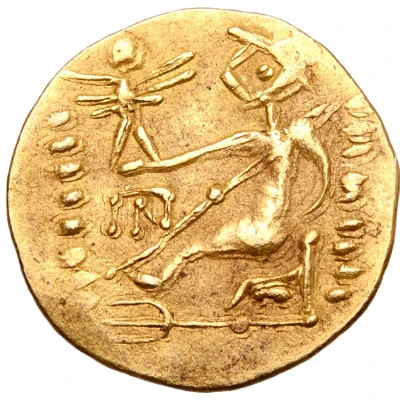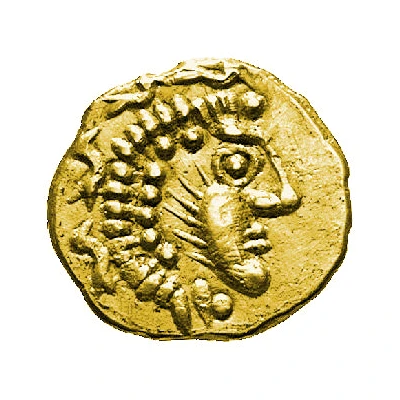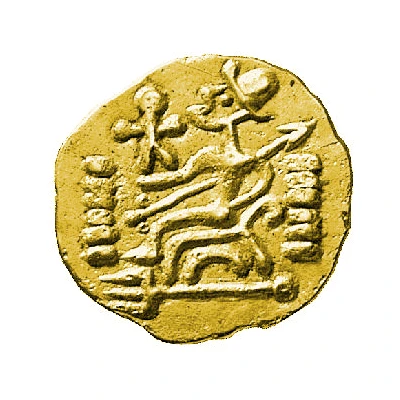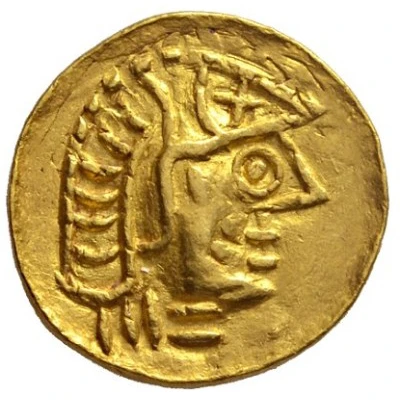
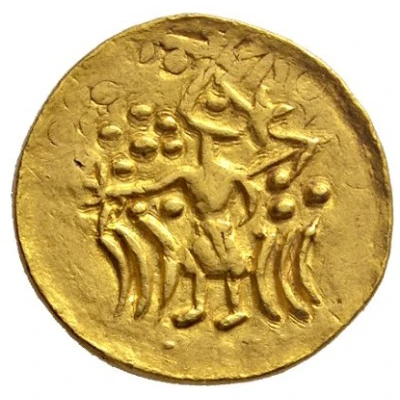

© Numismatik Lanz Auctions
Stater - Alexander III Kolchis imitation 100 BC - 1 BC
| Gold | 5.25 g | - |
| Issuer | Bastarnae Celto-Scythians (Central and Eastern Europe (ancient)) |
|---|---|
| Type | Standard circulation coin |
| Years | 100 BC - 1 BC |
| Value | 1 Stater = 20 Drachm |
| Currency | Stater |
| Composition | Gold |
| Weight | 5.25 g |
| Shape | Round (irregular) |
| Technique | Hammered |
| Demonetized | Yes |
| Updated | 2024-10-09 |
| Numista | N#199982 |
|---|---|
| Rarity index | 100% |
Reverse
Stylized Nike with stylis and wreath to the left, head turned to the right, several balls in the field. The edge was raised by opening after embossing.
Comment
Imitating Alexander III staters.Golenko, Chiron 1972 (volume 2) / p. 570ff, De Latour 9376 (this type, there under "Germani), Paulsen Boier Taf. 3/44 (this type; Paulsen, p. 28, names occurrences in Lake Constance), Coll Flesche p. 287f.
Imitating Alexander III. The assignation of this remarkable cointype has challenged scholars for many years now. Whereas Paulsen sees the origin of this type in the area of Lake Constance, Kapanadzes puts forth good arguments to peg down the provenence in the eastern region, notably in Colchis (western Georgia) (cp. Kapanadze, Über die ältesten Goldmünzen Grusiens, VDI 1949, S. 156-169). Although some scholars doubt the reports of the occurrence of this cointype in the western region, it nevertheless could be possible that the disturbances of the 1. Century BC and consequent tribal movements, as well as trading aspects could be responsible for the occurrence of such Goldstaters in the middle-european Celtic world. Flesche supports Vani in West Georgia as minting site. These imitations reveal another interesting information: The prototyps for our "Goldstater" were most probably circulating for approximately 200 years. (Source: Numismatics Lanz Munich Auction 160 Catalog)
Interesting fact
One interesting fact about this coin is that it is an imitation of a coin originally minted by Alexander the Great, but was actually produced by the Bastarnae Celto-Scythians, a group of nomadic people who lived in Central and Eastern Europe during the ancient times. Despite being an imitation, the coin still holds significant historical value and provides insight into the cultural exchange and trade practices of the time.

